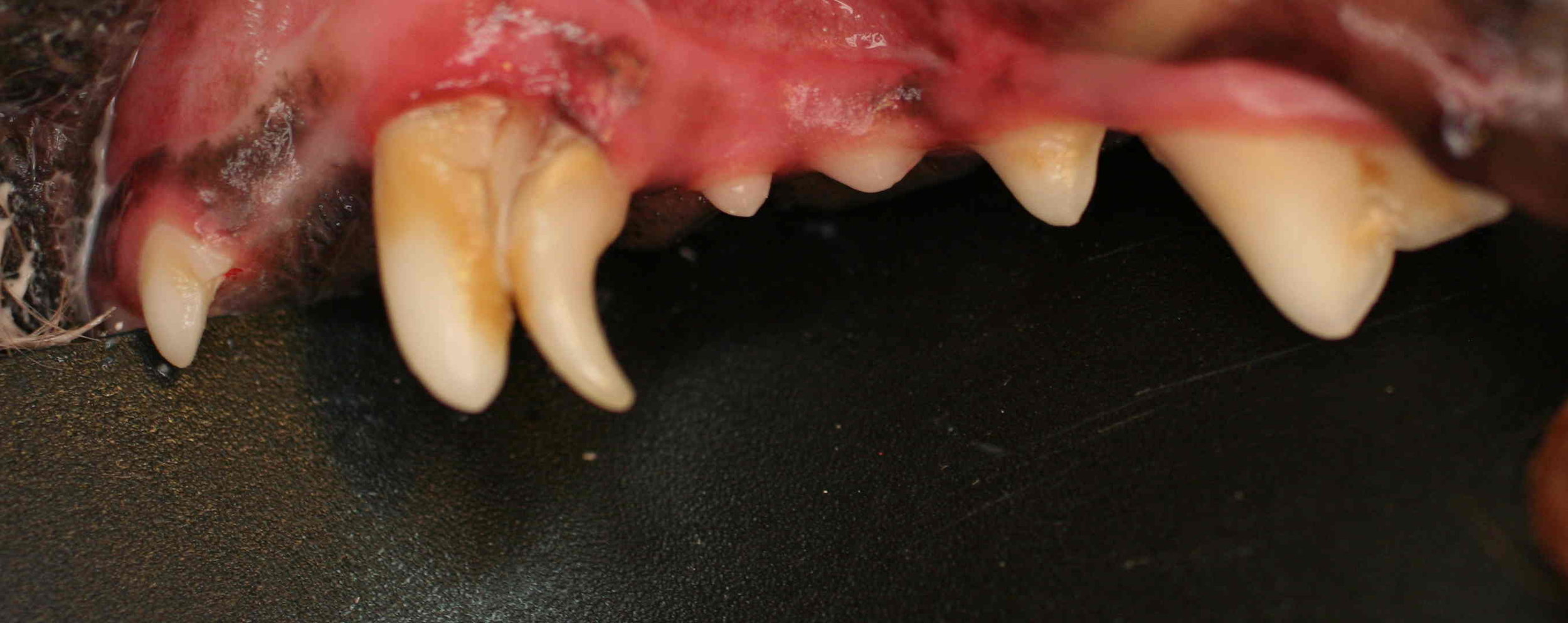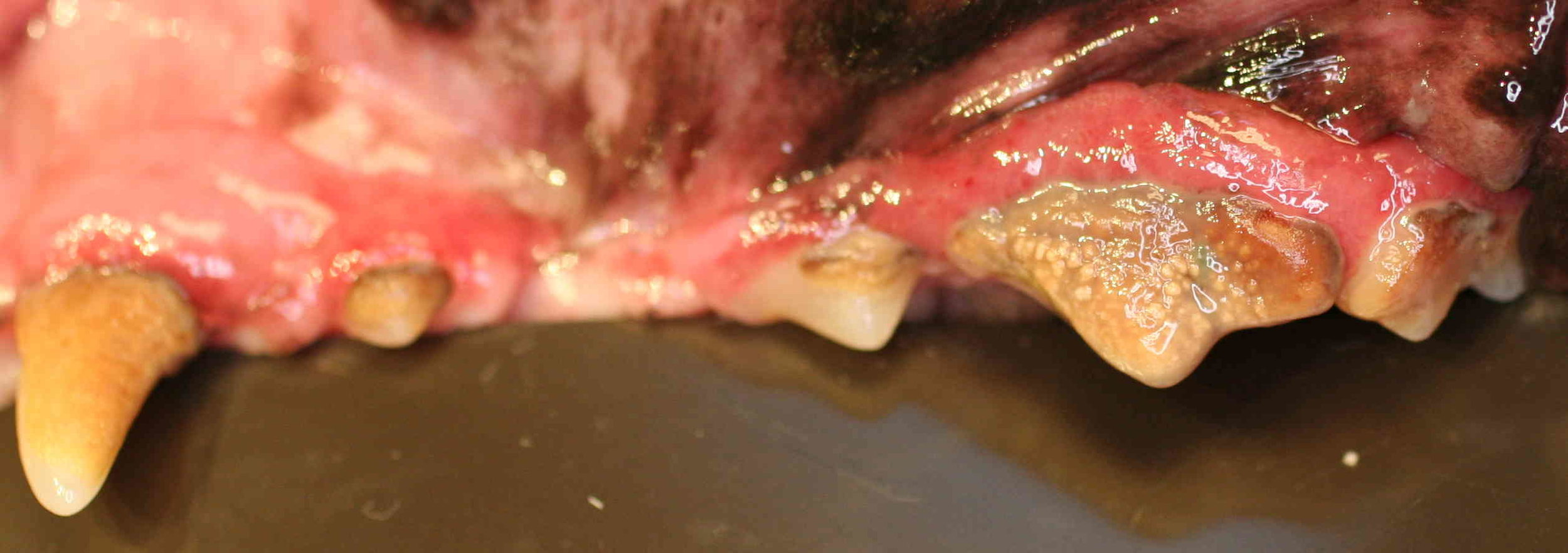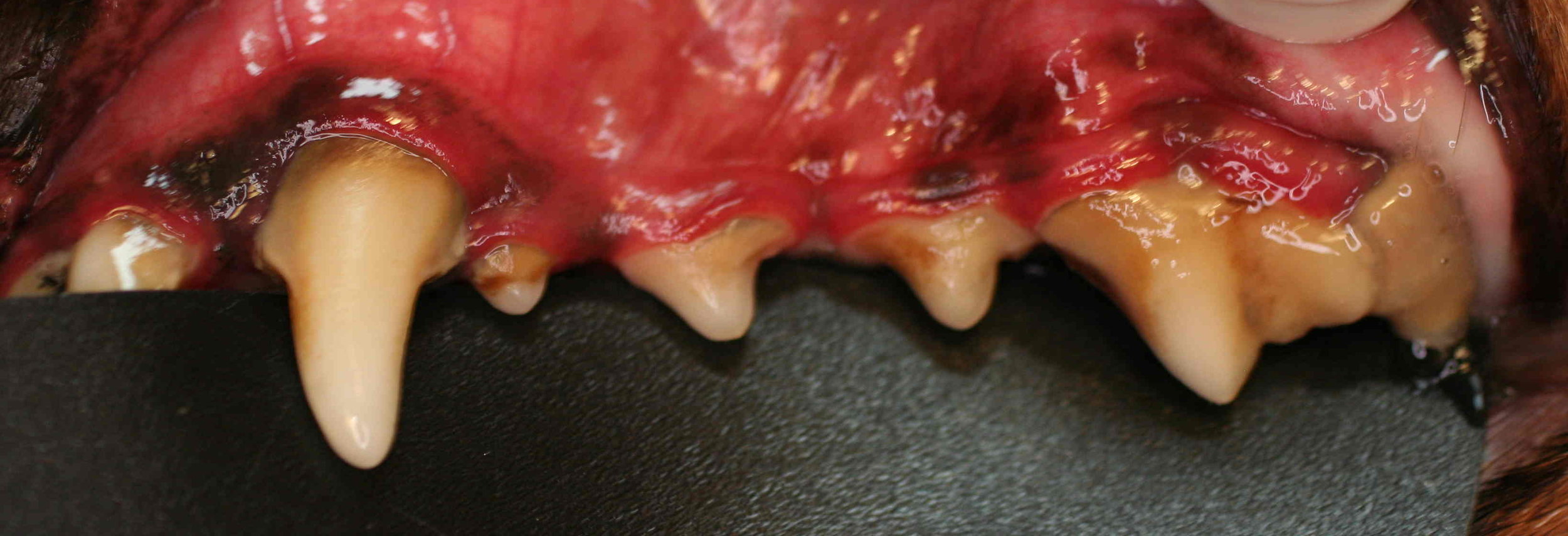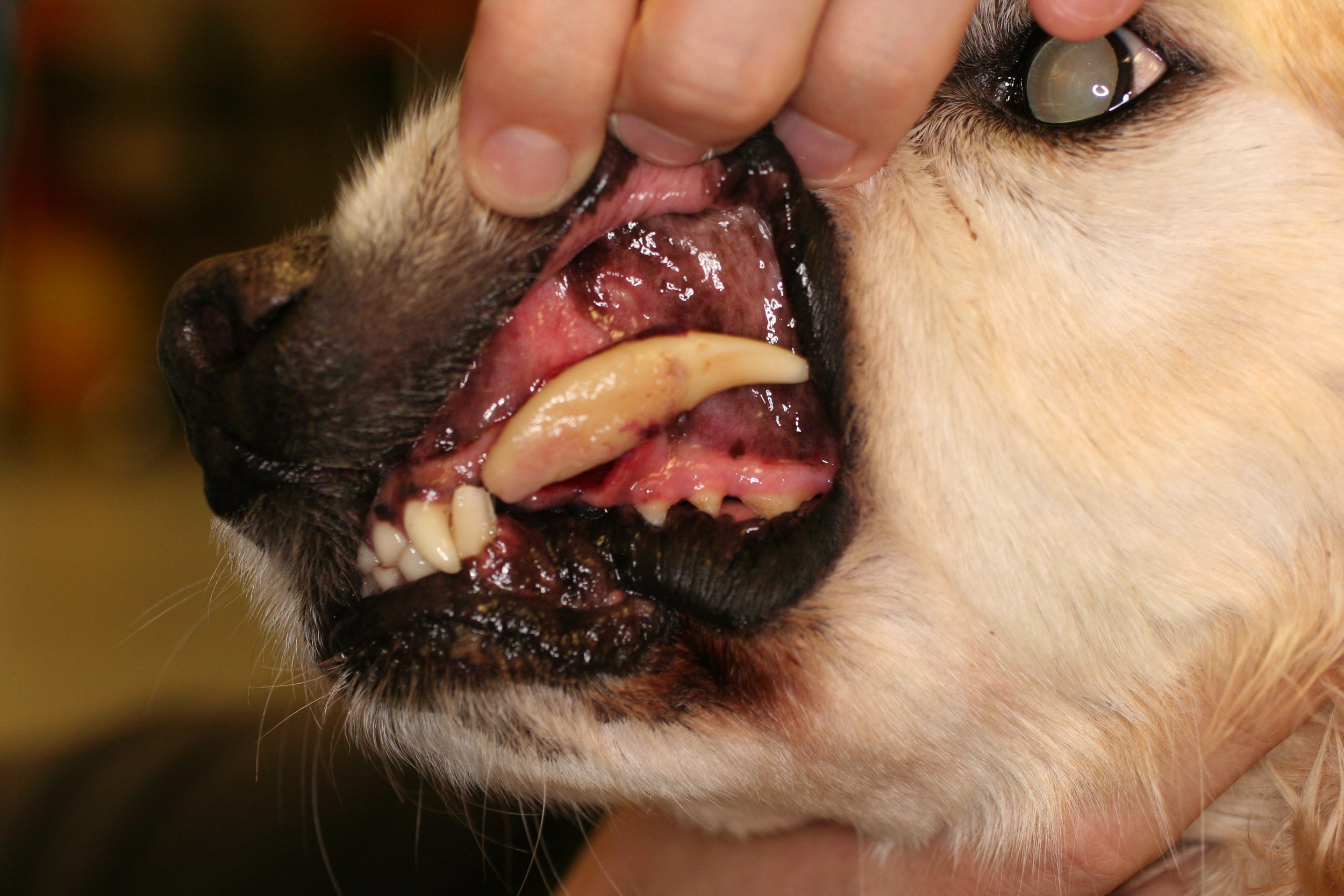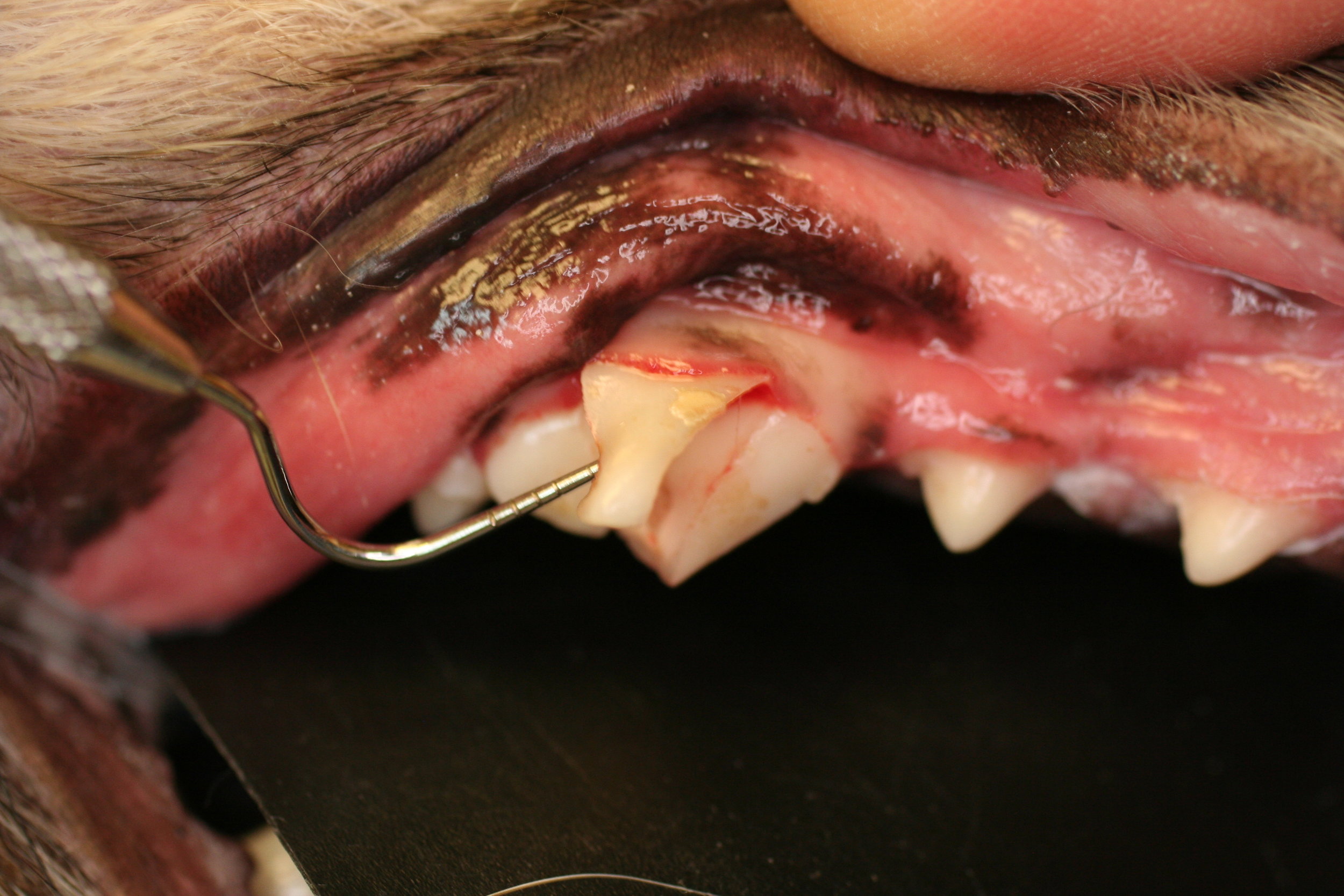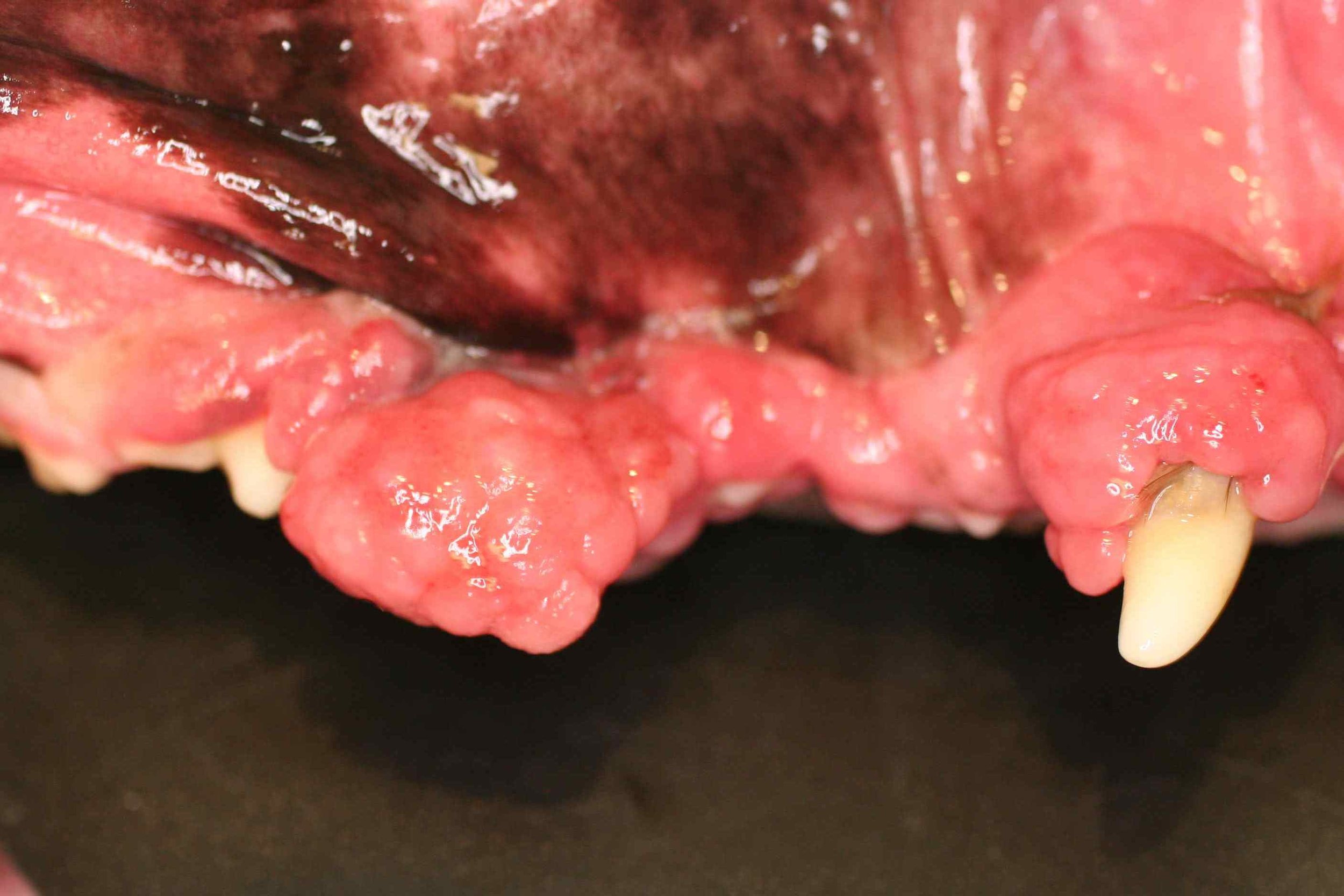There is no topic that is discussed more on a day-to-day basis than periodontal disease. I’m the first person to admit to getting up close and personal with my four legged family members, and I know from first-hand experience how unpleasant a loving kiss can be when it comes from a foul smelling mouth! So I thought I would take the time to expand on common questions and concerns that my clients have about periodontal disease and what we as responsible pet owners can be doing to prevent or slow down its progression.
First off, why should we care about periodontal disease? Other than the obvious bad breath, does periodontal disease affect my pet? The answer is a resounding YES! Periodontal disease is recognized as the second most common disease process that veterinarians diagnose, with the first most common disease process being superficial dermatitis (skin disease), no big surprise there…
As I have stated, the most common adverse effect that we as pet owners notice is the horrendous breath that welcomes us with the affectionate kisses that our cats and dogs provide. This halitosis (bad breath) is due to bacterial overgrowth on teeth. It turns out that bacterial overgrowth on teeth stinks to high heaven, and when that bacterial growth is left unchecked it is not subtle. Our mouths are full of bacteria. It can colonize teeth within 4-6 hours. This is why I can brush my teeth before bedtime, and yet I wake up with my wife commenting on my bad breath first thing in the morning. The same process occurs in our pets, but our pets rarely brush their own teeth 2-3 times daily.
If we were only worried about bad breath then we would not make such a big deal about focusing on improving our pet’s dental health, but there are several other negative factors that concern us. My biggest concern with periodontal disease is the chronic inflammation and the associated pain and discomfort that accompany it. I’m always amazed at how tolerant our four legged loved ones are of pain and how little they are capable of expressing it. I can’t tell you how many “normal” patients I have treated that have terrible oral pain, but show no detectable outward clinical signs. Full disclosure, I am just as guilty as anyone of my clients when it comes to recognizing my own dog’s periodontal disease. Both of my dogs fractured one of their premolars (the largest tooth in their mouths), and I didn’t have a clue until I took them in for their regular dental prophylaxis. They both showed signs of severe endodontic disease (disease below the gumline) during their dental cleanings and had to have a tooth extraction. I was shocked, as a veterinarian and pet owner, to have found such diseased teeth in my own dogs because I never picked up on any abnormal clinical signs. I was equally shocked to watch as my dogs’ overall demeanor and energy levels improved following their dental work. For me it was only after I removed the problem that I recognized how much my dogs’ periodontal disease was affecting their day-to-day comfort.
And lastly, periodontal disease can cause a chronic inflammatory state that impacts the rest of our pet’s health. Studies have shown that dogs and cats with chronic periodontal disease have a greater incidence of microscopic disease in several major organ systems, including the heart, kidneys, lungs and liver. As with any chronic disease process, when addressed early and managed appropriately, we can prevent long term disease and help improve the overall health and quality of life of our pets.
BEFORE Severe calculus and gingivitis, persistent puppy canine tooth.
AFTER Post dental cleaning and extraction of puppy tooth.
Enough about why we should care about our pet’s oral health, here are some recommendations to stay ahead of this common problem:
- Have your pet’s teeth evaluated by a veterinarian at least once a year. I can’t stress enough how important this is. If we can recognize dental disease early and address it, we can prevent long-term negative implications.
- Brush, Brush and Brush!!! That’s right folks, brushing your pet’s teeth is still the number one preventative treatment. There simply is no substitute for daily teeth brushing. I know everyone reading this is groaning to themselves and I am fully aware of how much time and commitment daily teeth brushing requires, but with most pets it is doable. I am the first to admit I failed many times when trying to train my dogs to accept teeth brushing. But in my case I was the problem and not my pets. The key to successful teeth brushing is setting a routine, positive reinforcement and most importantly BEING PATIENT! I have countless stories of clients who have really committed to preventing periodontal disease. A lot of my clients do not brush their pet’s teeth because they are nervous about it or just simply do not know how to get started. Next time you are in the office, ask one of us to sit down with you and demonstrate proper brushing technique and appropriate training.
- I am not deluded to thinking that each and everyone of us will be successful with daily brushing, thankfully there are some alternatives (these are by no means replacements for brushing). Incorporating some combination of the following preventative measures can help slow down the rate of periodontal disease:
- Dental Chews- There are a variety of dental chews on the market. I recommend a daily chew called Oravet made by Merial. Next time you are in ask about the different chews that are available and we can find the one that fits with your individual pet.
- Oral gels and rinses- These are a little more labor intensive than giving our pet a chew, but they can have great benefits and are easier to apply than brushing.
- Water additives- These can be very helpful, however always speak with a veterinarian before using. Some animals will dislike the flavor of the water additive and will avoid drinking water which can have negative adverse effects.
- Dental Diets- I am not a huge fan of dental diets. I think implementing some combination of the options listed above is more effective. I strive to get each and every one of my patients on a high quality diet for the benefit of their overall health and the dental diets really limit what we can choose from.
- Lastly, we have to remember that periodontal disease is progressive even with the best preventative plan. When our pet’s dental disease progresses beyond basic preventative measures then it is time to have their teeth cleaned professionally. Having a professional dental cleaning will be a decision we will make together during one of our visits.
BEFORE Severe calculus and gingivitis.
AFTER Post dental cleaning procedure.
There is a lot of information out there that touches upon dental disease in dogs and cats. If you are interested in reading more about it then I recommend visiting the Veterinary Oral Health Council’s website. This website was created by board certified veterinary dentists and is a wealth of knowledge and recommendations when it comes to preventing and addressing periodontal disease.
Remember that this is a joint effort and there is no one single plan that works best for each dog or cat. Don’t be shy next time you are in the exam room with one of us, we encourage questions and or concerns about our pets’ dental health.
BEFORE Severe calculus and gingivitis.
AFTER Post dental cleaning procedure.


